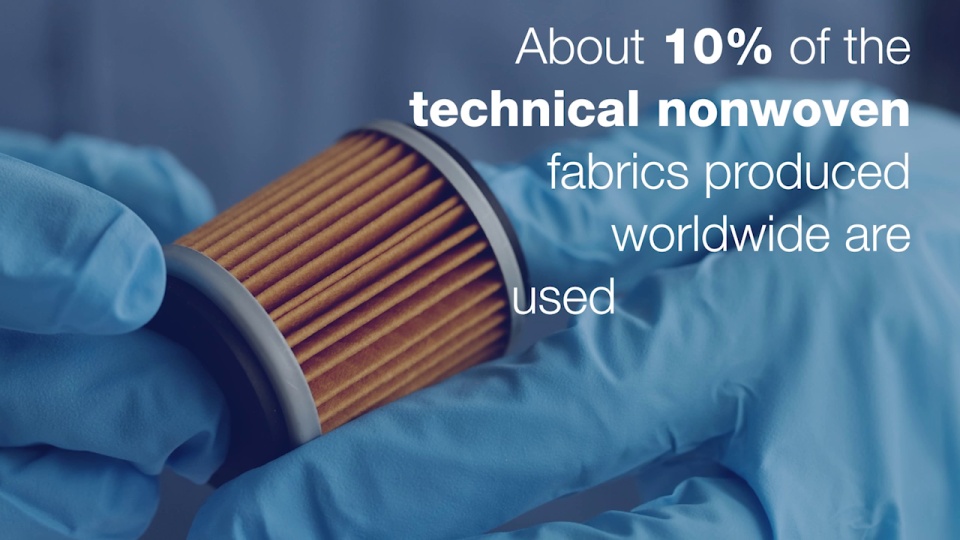About 10% of the technical nonwoven fabrics produced worldwide are used in filtration.
The filtration market is split into the two segments of air/gas and liquid filtration and is characterised by a yearly growth of more than 7 %. By 2024, a total production volume of more than 610,000 tons of nonwoven fabric for filtration applications is expected. The ratio of gas and air filters to liquid filters is approximately 1:2.
Depending on the specific application, the demands on filters are extremely high. To this end, high-efficiency particulate air filters for clean rooms must, for example, filter < 1µm particles from the air with virtually 100-percent efficiency. Filters must achieve their separation performance with the lowest possible pressure drop – in other words, filter resistance. Pressure drop is one of the most important quality features of filters: the lower the pressure drop, the more energy efficient the filter of the corresponding filter class is.
The meltblown technology is one of the most efficient methods for producing very fine and highly-separating filter media made from synthetic fibers. Depending on the application, the pore size of a meltblown nonwoven material ranges from 5 to 40 µm. The fineness of the meltblown fibers used for filter media lies within a range of 200 to 2,500 nm.
To increase the filter performance of nonwovens without pressure loss and thus in an energy-efficient way, they can be hydrocharged, for example. Using hydrocharging by hycuTEC, the pressure drop of a typical FFP2 filter media can be reduced to less than a quarter. Filtration efficiencies of over 99.99% can be easily achieved with typical filter media around 35 g/m² at 35 Pa.
